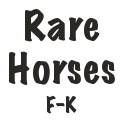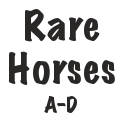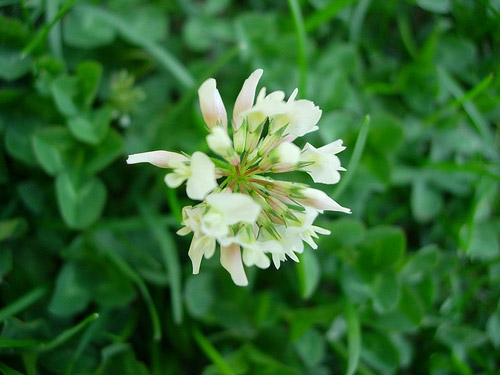There is a huge variety of horse colors and they all stem from four bases, on top of that coats can be affected by a variety modifiers, dilutions and white patterns.
Base Colors
There are four basic horse coat colors: black, chestnut, bay and brown. From these stem the wide variety of color modifications, dilutions and white patterns we see today in domestic and feral horses the world over.
Modifiers
There are several genes which modify base colors, including mealy, sooty and flaxen. The can also affect other modifiers, dilutions and white patterns creating an even wider range of each coat color.
Dilutions
There is a number of dilutions that affect color, including dun, silver, champagne and cream. They have an effect on bases, modified colors, other dilutions and can be double diluted for more extreme expressions.
White Patterns
White patterns can affect any color and produce some of the more spectacular horse coats, like pinto, appaloosa and roan. Some breeds are bred for their spotted patterns, while others discourage and won’t register them.
Markings
White markings on the face or legs can occur in all colors and are not (always) related to a white pattern. There are also a variety of different body markings, some from spotting patterns and others simply genetics at work making nice things.
 Sadly there are a wide variety of rare breeds in the modern world of today. Many of them simply outliving their usefulness (poor drafts) and often they were rare to begin with.
Sadly there are a wide variety of rare breeds in the modern world of today. Many of them simply outliving their usefulness (poor drafts) and often they were rare to begin with. 
 There are hundreds of horse breeds across the globe, some we see every day and some are far more elusive. In fact, some of them are rare enough to be considered endangered and that’s positively sad.
There are hundreds of horse breeds across the globe, some we see every day and some are far more elusive. In fact, some of them are rare enough to be considered endangered and that’s positively sad.
 Black
Black Chestnut
Chestnut Bay
Bay Brown
Brown Pangare
Pangare Sooty
Sooty Flaxen
Flaxen Dun
Dun Cream
Cream Silver
Silver Champagne
Champagne Pearl
Pearl Mushroom
Mushroom Light Black
Light Black Grey
Grey Roan
Roan Pinto
Pinto Appaloosa
Appaloosa Rabicano
Rabicano Face
Face Legs
Legs Body
Body Rare
Rare Liver Chestnut
Liver Chestnut Red Chestnut
Red Chestnut Standard Chestnut
Standard Chestnut Sandy Chestnut
Sandy Chestnut Roan
Roan Pinto
Pinto Appaloosa
Appaloosa Rabicano
Rabicano


 Chestnut Base
Chestnut Base Bay Base
Bay Base Seal Base
Seal Base Flaxen Modifier
Flaxen Modifier Dun Dilution
Dun Dilution Silver Dilution
Silver Dilution Champagne Dilution
Champagne Dilution Roan
Roan Pinto
Pinto Appaloosa
Appaloosa Chestnut Base
Chestnut Base Bay Base
Bay Base Brown Base
Brown Base Cream Dilution on Chestnut
Cream Dilution on Chestnut Cream Dilution on Bay
Cream Dilution on Bay Pinto
Pinto Appaloosa
Appaloosa